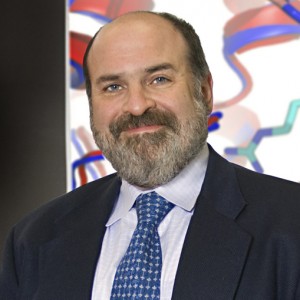Kenneth E. Neet (1936 – 2017)
Ken Neet was an extraordinary human being, a consummate academician and a professional citizen. He will be remembered as an accomplished scientist with imagination and energy, as an exceptional leader who performed selfless service for our academic and scientific community at large and as a talented teacher who inspired wonder and passion.
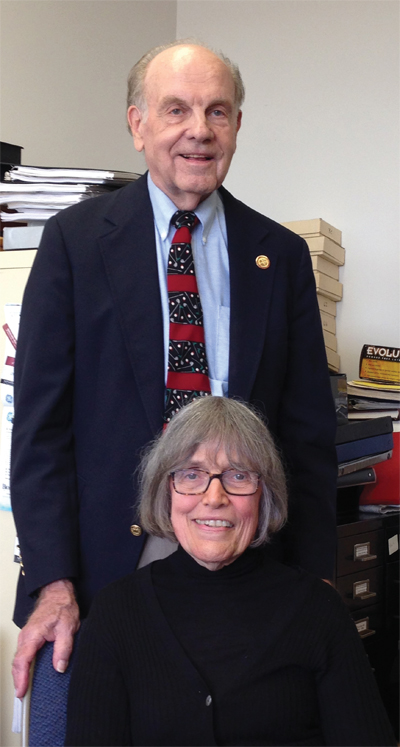 Ken Neet and his wife, Jane, pictured at his retirement in 2014 from the Chicago Medical School at Rosalind Franklin University of Medicine and Science. courtesy of Kyoung Joon Oh
Ken Neet and his wife, Jane, pictured at his retirement in 2014 from the Chicago Medical School at Rosalind Franklin University of Medicine and Science. courtesy of Kyoung Joon Oh
Ken Neet was an extraordinary human being, a consummate academician and a professional citizen. He will be remembered as an accomplished scientist with imagination and energy, as an exceptional leader who performed selfless service for our academic and scientific community at large and as a talented teacher who inspired wonder and passion.
Ken was born Sept. 24, 1936, in St. Petersburg, Florida. He rose from humble roots to graduate from St. Petersburg Junior College and subsequently received a Bachelor of Science in chemistry (1958) and a Master of Science (1960) from the University of Florida. He served as a biochemist with the Navy in the Physical Biochemistry Division at the Naval Medical Research Institute in Bethesda and earned a Ph.D. in biochemistry (1965) from the University of Florida. There, Ken worked under the direction of the renowned protein biochemist Frank W. Putnam, seeking to understand protein folding and stability by elucidating the biophysical pathway of protein denaturation. Ken then completed a postdoctorate at the University of California, Berkeley (1965-67) with the legendary Daniel Koshland. Always ahead of his time, Ken created a “chemical mutation” (his words) by converting an essential active site residue of an enzyme from serine to cysteine. This innovative research long preceded the advent of genetic engineering in later decades.
After his postdoctorate, Ken joined the faculty at Case Western Reserve University, where he rose through the ranks to become a full professor by 1978. Ken studied protein conformational changes related to enzyme activity and became a world-renowned expert in this field. He authored a review in Annual Review of Biochemistry titled “The catalytic and regulatory properties of enzymes,” a paper cited almost 700 times.
Ken was a firm believer in keeping yourself renewed by sabbaticals. In 1980, he sojourned at Stanford as a visiting scientist.
His work with Eric Shooter resulted in a shift in his research when he applied his expertise in protein chemistry and stability to the study of nerve growth factor, a key molecule involved in neuronal growth as well as a target for ameliorating neurodegenerative disease. Ken’s research focused on understanding not only structure–function correlates but also a possible treatment rationale for Alzheimer’s disease. A natural outgrowth of these studies was a renewed examination of the regulation of nerve growth receptor heteromers.
In 1990, Ken moved to the shores of another of the Great Lakes, to the Chicago Medical School at Rosalind Franklin University of Medicine and Science, where he chaired the department of biochemistry and molecular biology from 1990 to 2005. At Rosalind Franklin (formerly the Finch University of Health Sciences), he was recognized for initiating a program with an academic focus on protein structure. Ken’s talent for recruiting faculty with expertise in cutting-edge technologies ushered in a new era. He encouraged use of X-ray diffraction, enrolling the university in subscriptions to the then-new beamlines at Argonne National Laboratory and establishing proteomics and a panoply of spectroscopy within the department. His own research included extramural funding spanning from 1969 to 2009 that yielded some $7 million in grants ($20 million in today’s dollars). He published 107 peer-reviewed papers and 20 book chapters/reviews. His most recent work evolved from his mentoring and collaboration with junior faculty and was published in Scientific Reports the week of his passing. Ken achieved emeritus professor status in mid-2014, but he maintained an office, attended seminars and continued as associate dean of research for another year. He demonstrated that he was a prolific thinker and active contributor to the university and department.
Ken also had a worldwide reputation for his breadth of knowledge, as reflected by the professional services completed throughout his career. He was a founding member of the Protein Data Bank Advisory Group and was on the editorial boards of Protein Science, Molecular & Cellular Proteomics and, most notably, the Journal of Biological Chemistry, where he was senior associate editor for 17 years. All this attests to his recognition and stature as an expert. His service for the American Society for Biochemistry and Molecular Biology included being treasurer and council member from 2000 to 2006 and Finance Committee member from 2009 to 2015.
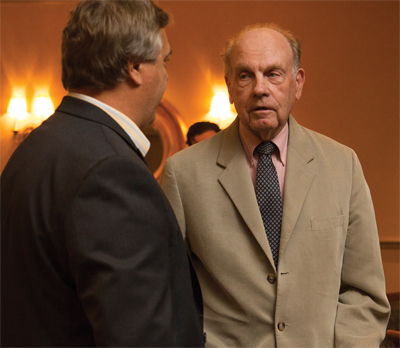 Ken Neet, right, talks to Stephen Miller, chief financial officer of the American Society for Biochemistry and Molecular Biology, at a meeting in 2013.emily huff/ASBMB
Ken Neet, right, talks to Stephen Miller, chief financial officer of the American Society for Biochemistry and Molecular Biology, at a meeting in 2013.emily huff/ASBMB
He was secretary for three years of the Association of Medical and Graduate Departments of Biochemistry, an organization of academic department chairs. His commitment to the research community was exhibited by his participation in numerous study section panels, including four at the National Institutes of Health, three at the National Science Foundation and one at the Office of Naval Research as well as his 15-year tenure reviewing grants for the Alzheimer’s Association.
In addition to serving as a department chair at the Chicago Medical School, Ken was the associate dean for research from 2004 to 2015. One of his major initiatives was tripling the number of relevant research experiences for our medical students, a crucial value-added factor for successful residency applications. As a concerned local resident, he was recognized in 1995 by the Illinois State Board of Education with the Those Who Excel Award for service to a local school district with a large population underserved in science and medicine, predating what we now know as STEM (science, technology, engineering and mathematics). Ken also believed in developing talent. A former postdoc and two faculty members he hired at Chicago Medical School became department chairs themselves.
As a teacher, Ken Neet was legendary. Just prior to his retirement, he was the most prolific teacher in our department with the largest number of hours. He taught in every medical and graduate school course (n = 7) offered through our department. He directed medical genetics for 10 years and was course director of physical biochemistry for 12 years. He was revered by both students and postdocs under his tutelage. The outpouring of grief and stories shared upon learning of his demise is remarkable in the communal response by all generations of scientists.
Ken embodied the ideals of scientific and professional leadership, service and teaching. We all miss him tremendously and attempt to model what he represented for us as an exemplar of respect, scientific integrity and exceptional leadership.
Ken died April 12. He was a modest and private person who enjoyed his family; their pictures adorned his office along with mementos of his scientific accomplishments and honors. He is survived by his wife of 57 years, Jane, and four children, Kerrie, Kellie, Kirk and Kyle.
(The author thanks the people at Rosalind Franklin University of Medicine and Science who offered up factoids of Ken Neet’s life and career.)
Remembrances
When I was recruited and received several tenured job offers, including one at Chicago Medical School, Ken, playing surrogate real estate agent, drove me around Chicagoland and shared his vision of the department with me, including the usual start-up packages and the creation of the Midwest Proteome Center. As I spoke to one of my mentors, who was familiar with Ken Neet, he remarked that Ken was “about 65” and “you should be certain that he will be around after your hiring.” Ken assured me he was not planning to retire soon and ended up on the active faculty until he was almost 80. He was always a man of his word.
In faculty, strategic planning or other meetings, Ken was always the quiet one, taking in the environment and assiduously hearing everyone’s points of view. Then he would ask the questions that drove to the core of the discussions that facilitated arrival of the ultimately wisest decisions. This involved his anatomic structure function correlate of why we have two ears and one mouth — so we can listen much more carefully than we speak.
—Marc J. Glucksman
In the mid-1980s I walked into a room to serve a term on a National Institutes of Health study section, somewhat intimidated by the fact that I vaguely knew only a few people in the room. Ken Neet immediately walked up to me with a broad smile and a handshake. We chatted for a few minutes, and then he introduced me to a number of those present. I was immediately put at ease.
Six or seven years later, I, along with everyone around me, benefited from those qualities of friendliness, kindness and thoughtfulness when he accepted the position of chair of the department of biochemistry and molecular biology at Chicago Medical School. Manifesting those qualities along with a keen intellect, Ken established himself as a much-admired teacher, a respected department leader and university administrator, and a valued participant in the national biochemical community, all while maintaining a highly productive and funded research group.
I also have fond memories of Ken from our many years of enjoyable, although usually poorly executed, rounds of golf, followed by always well-executed rounds at the 19th hole.
—Bob Kemp
It was with great sadness that I learned of Ken’s passing. Not only was he a dear friend, but he was also something of a kindred spirit. Our careers intertwined at many places; we were both treasurers and long-term members of the American Society for Biochemistry and Molecular Biology Finance Committee, both associate editors of the Journal of Biological Chemistry, both departmental chairs and, perhaps most importantly, both aficionados of protein chemistry, with particularly reference to nerve growth factor and its role in biology and neuroscience (on which we published a paper together in the JBC). This resulted in many opportunities to interact, including some lovely dinners (especially with our wives, Jane and Penny), and to discuss science, publishing and the fascinating topic of departmental politics.
Although not normally loquacious, Ken had a broad range of knowledge and a marvelous insight into everything from protein structure to human nature, and he was thoughtful in expressing his opinions and judgments. I always paid attention when Ken had something to say. Indeed, when the society launched Molecular & Cellular Proteomics in 2001, I recruited Ken and Tom Vanaman (both JBC associate editors at the time) to the new editorial board to give it the benefit of their deep experience and extensive wisdom as preeminent protein chemists. I knew they would be invaluable in building credibility early, and indeed they were.
Ken was a protein physical biochemist of the old school — he knew all the ins and outs of the complex arsenal of biophysical techniques — but he was also au courant with the rapidly developing methodologies and applications of molecular and cellular biology, and his research, particularly in the later years, was very much directed to biological questions. Thus, I always looked forward to our discussions of the latest findings in the world of NGF and to our friendly arguments as we dissected our separate views (some in accord and others not) about our favorite molecule. He invariably had ideas and explanations that I had not thought of, and I never finished a conversation with him without feeling that I had learned something new.
Simply put, Ken was a delightful person — unassuming, generous and kind. He was the type of person that when you called upon him for a favor, he would always agree and would do his best to help with whatever issue you were struggling with. He was a gentleman, a scholar and a scientist of the finest caliber. There is no question that he was a leader and a mainstay at Rosalind Franklin Medical School and they will miss him very much, as will his many friends, colleagues and family — and as will I.
—Ralph A. Bradshaw
I met Ken Neet in 1997 by phone as I was running out of my office to give a medical pharmacology lecture at the University of South Alabama College of Medicine where I was then a professor. I had responded to a job ad, and this was a “let’s see if there’s some interest” call. From the outset, I sensed in Ken many of the traits that I admire in a mentor and to which I would aspire.
On my second interview for a professorship in his department at the Chicago Medical School, Ken held my three-month-old daughter gently, but confidently, as he led my wife and me on a tour of potential lab spaces. Soon after I signed a contract to join the faculty, I ordered a -80 freezer, and Ken volunteered to set it up so I could avoid another long-distance trip. I later learned that Ken always said the way he knew he had hooked a new faculty member was not when they signed the contract, but when they shipped their -80 samples — that indicated they were really coming.
Ken was a valued mentor, colleague and friend through the rest of my career. When it became apparent, to both of our surprise, that I had talent and interest in science administration, he helped me develop in that area without sacrificing my research program. In 2002, Ken made me his vice chair and then allowed me to observe and to participate in some of the difficult decisions regarding allocation of department resources, etc. In 2005, he put my name forward as his successor as chair of the department of biochemistry, an action subsequently endorsed by the school and the university. In January 2006, I followed in Ken’s footsteps as chair.
Because of his mentorship, I was familiar with the fine balance of time allocation among teaching, research, grant writing and administration. In subsequent years, Ken provided much advice, especially during the financial crisis of 2008-2009 when difficult resource decisions needed to be made.When my career trajectory was intercepted by the medical school’s need for a vice dean for research (2010) and then the university’s for a vice president for research (2011), the latter necessitating that I step down as chair, Ken continued to provide the experience-based humor, data-driven wisdom and unencumbered advice that influenced my deliberations.
Ken vicariously experienced the growth, achievements and tribulations of my children over the past 20 years with his avid attention to stories about them. He exhibited his genuine interest in their lives with his unsolicited and frequent queries.
In the course of my career, I have had the good fortune to come across several individuals who shaped my path. Ken was one of them. I am proud to have called him my friend, colleague and mentor. I will miss him dearly.
—Ronald S. Kaplan
Ken E. Neet was my chair for 16 years and my friend for 27 years. I was proud to be a member of his department as he made significant contributions to science and was recognized among the scientific community in many ways. As chair, Ken transformed a broad-based department into one focused on protein structure and function, with an emphasis on X-ray crystallography. This emphasis continues today. Ken contributed to the education of students, from didactic lectures to medical and graduate students to the teaching of undergraduate through postdoctoral students in his laboratory. I have heard nothing but exceptional praise for Ken as a mentor. Serving on many of his students’ committees, I can attest that their educational experience was exceptional. I don’t know if all who worked in his lab recognized Ken’s accomplishments and history, but now they are part of them.
And Ken was more than that — he was a good person. He was not pretentious, but rather modest, sincere and honest. These attributes made Ken very approachable, and I frequently interacted with him in both professional and social settings. We often talked about new hypotheses I had and new directions in my research. We played golf in a quietly competitive way but rather humorously, since neither Ken or I were very good.
Ken’s big loves were his family and his science. He lived modestly and chose to spend his money and free time with his family. Ken and Jane gave their four children first names that started with K and middle names that started with E, so his and their initials were all KEN. As for his love for science, Ken once told me that he knew why scientists do not get caught up in sex scandals; scientists are too interested in experiments, he said, and thus distracted from everything else around them. This statement, valid or not, illustrated Ken’s sincere love for science. It is impossible to evaluate the impact one person has on another, but I am certain that I am better off because of my relationship with Ken, both in and outside the lab.
—David Mueller
Enjoy reading ASBMB Today?
Become a member to receive the print edition four times a year and the digital edition monthly.
Learn moreGet the latest from ASBMB Today
Enter your email address, and we’ll send you a weekly email with recent articles, interviews and more.
Latest in People
People highlights or most popular articles

Hope for a cure hangs on research
Amid drastic proposed cuts to biomedical research, rare disease families like Hailey Adkisson’s fight for survival and hope. Without funding, science can’t “catch up” to help the patients who need it most.
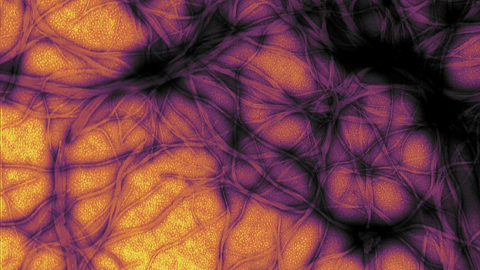
Before we’ve lost what we can’t rebuild: Hope for prion disease
Sonia Vallabh and Eric Minikel, a husband-and-wife team racing to cure prion disease, helped develop ION717, an antisense oligonucleotide treatment now in clinical trials. Their mission is personal — and just getting started.
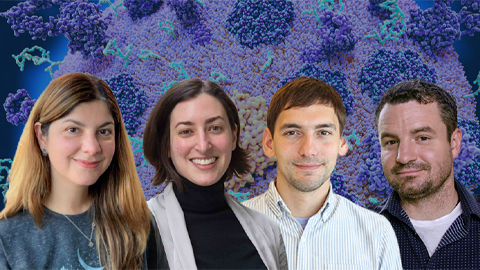
ASBMB members recognized as Allen investigators
Ileana Cristea, Sarah Cohen, Itay Budin and Christopher Obara are among 14 researchers selected as Allen Distinguished Investigators by the Paul G. Allen Family Foundation.

AI can be an asset, ASBMB educators say
Pedagogy experts share how they use artificial intelligence to save time, increase accessibility and prepare students for a changing world.

ASBMB undergraduate education programs foster tomorrow’s scientific minds
Learn how the society empowers educators and the next generation of scientists through community as well as accreditation and professional development programs that support evidence-based teaching and inclusive pedagogy.

Honors for Gagna and Sundquist
Claude Gagna is being honored for the diagnostic tool he developed that uses AI to streamline diagnostics. Wesley Sundquist is being honored for his role in finding that HIV’s capsid was a target for treatment.

